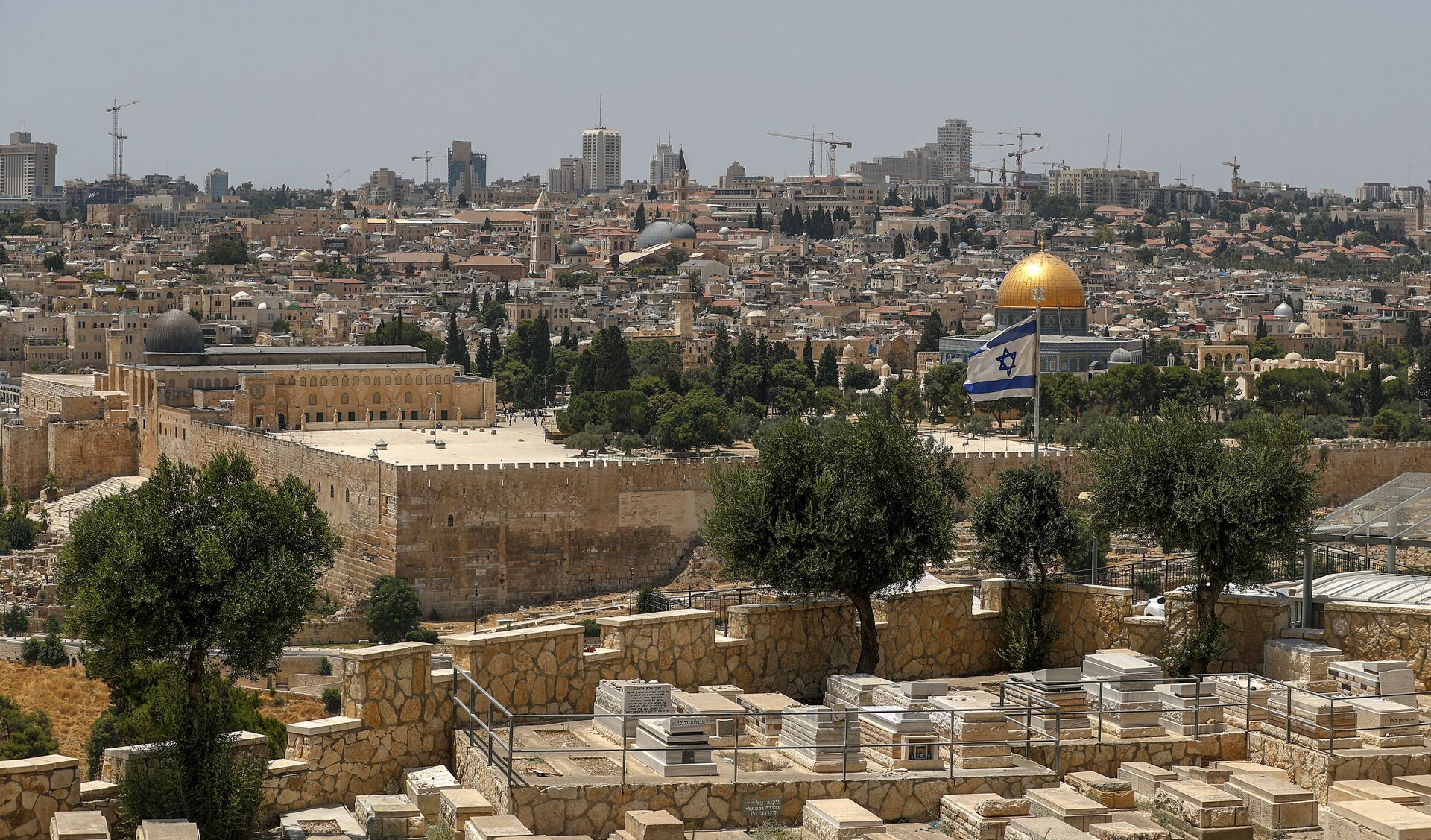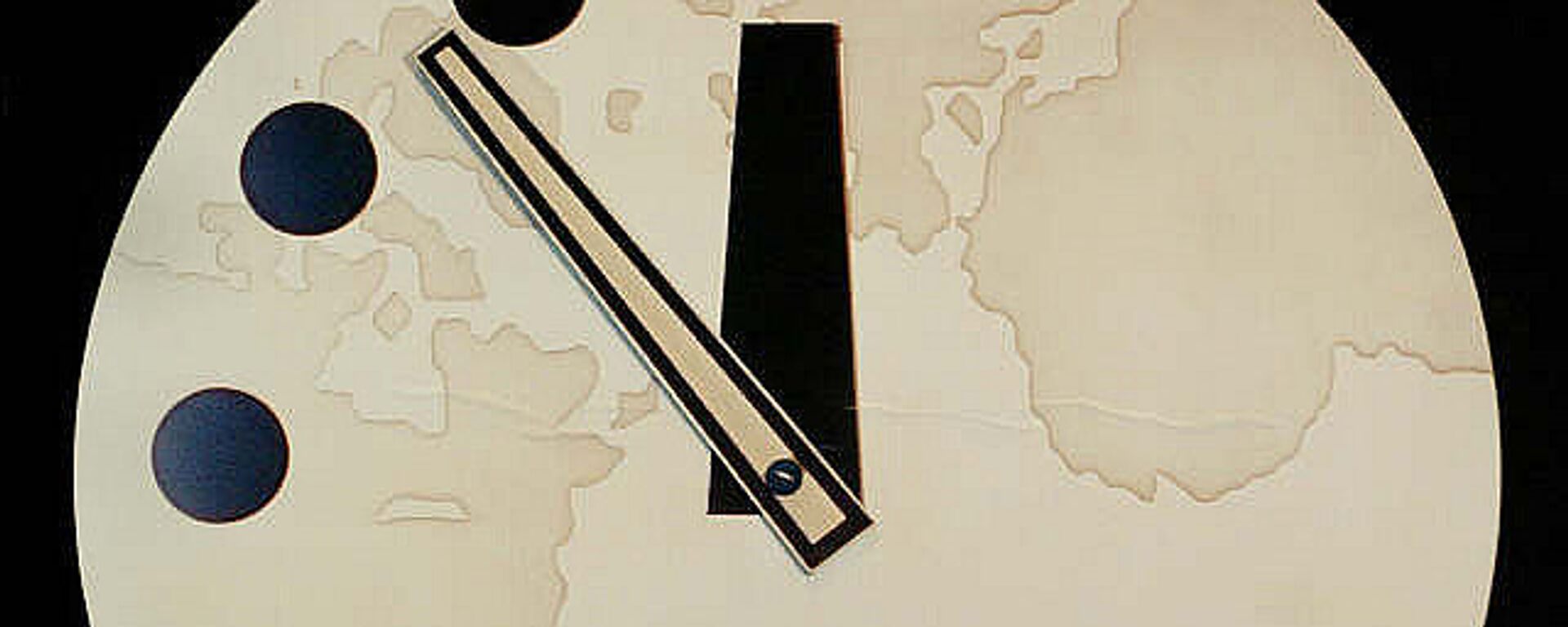‘A Perfect Storm of Calamities’: When And Where Can We Expect Armageddon to Strike?
14:46 GMT 20.02.2022 (Updated: 21:02 GMT 20.02.2022)

CC0 / /
Subscribe
The exact location of the valley where the forces of Good and Evil will meet in the last battle, after which, according to Judaism, Christianity, and Islam, the Last Judgment awaits humanity, has been the subject of a longstanding and heated debate between scientists and theologians. They are yet to find "common ground" in this quest.
In Jewish, Christian, and Muslim beliefs about the end of history and the Last Judgment, the end is spoken of in much of the writing and teaching in apocalyptic, frightening terms. Perhaps the most unusual description is offered in the Christian New Testament. Its final book is called the Revelation of John the Theologian, or the Apocalypse.
End Times
The Apocalypse offers a narrative of the events that precede the second coming of Christ to Earth. Of the many images imprinted in the mass consciousness, one stands out – that of the Antichrist, who will lead believers astray.
"…and they (demons) gathered the kings and armies of the world together at the place which in Hebrew is called Har-Magedon (Armageddon)," reads the Book of Revelation, also called the Apocalypse of John.
Therefore, a little-known toponym became a household name denoting a large-scale catastrophe, prompting theologians to look for the exact place for centuries, but to no avail.
In the 19th century, archaeologists took over the quest.
In 1838, American professor Edward Robinson, travelling through the Holy Land, relied on a primitive method in his search: he took geographical names from Scripture and compared them with modern ones. However, this was of little help to him, as most of the Jewish names had been replaced by Arabic ones.
Once he found himself in the town of Tell el-Mutesellim – translated as "The hill of the ruler," in honour of King Solomon, who built a city here in the 10th century BC.
This city – Har Megiddo – is mentioned dozens of times in the Hebrew Bible and in a multitude of other ancient texts. It is especially well-known as the setting in the New Testament for the “penultimate battle between the forces of good and the forces of evil," according to Eric Cline, a professor of classical and Near Eastern languages and civilizations at George Washington University, author of the book "Digging up Armageddon: The Search for the Lost City of Solomon."
According to Cline, by the Middle Ages, multiple nationalities, languages, and centuries had “added an 'n' and dropped the 'h', transforming Har Megiddo to Harmageddon and thence to Armageddon." Edward Robinson suggested that this was the place referred to in the Apocalypse.
Place of ‘Fateful’ Events
Megiddo is an archaeological site that was inhabited between roughly 7000 B.C. and 300 B.C., with numerous battles fought there at the time.
The Book of Revelation, which refers to the site as Armageddon, prophesied that the final battle at the end of time would take place precisely there.
Only at the end of the 20th century was Megiddo studied thoroughly by scientists, who discovered that in the III century BC a large-scale catastrophe had ravaged the place.
Megiddo view above the "Temples area" in the excavated ancient town built on the mound, believed to be the "Armageddon place". Yizre'el valley stretches to the far side, the Lower-Galiliee mountains due north.
— IkeHarel 📷 (@IkeHarel) February 18, 2022
Map: 32.5855, 35.1847
09/05/2015
📷#Canon 60D, Ef28-135#photography pic.twitter.com/JpvS6C0Em4
"A strong earthquake must have destroyed many cities in the Eastern Mediterranean. This became a veritable “vindication of God’s justice" for the locals," believes Eric Cline.
According to him, the event was imprinted deeply in people's memory – so much so, that it was with Megiddo that they began to associate something ultimately destructive.
Not everyone agrees with Cline's version. The fact is, the book was written in Greek, and it is unlikely that its author could know Jewish culture so well.
“It has been held commonly that the battle of Armageddon is an isolated event transpiring just prior to the second advent of Christ to the earth,” wrote American Christian theologian John Dwight Pentecost.
He added that in his opinion, it should be perceived not as an isolated battle, but “rather a campaign that extends over the last half of the tribulation period.” He aslo wrote that the Greek word "polemo," translated as "battle" in Revelation 16:14, signifies a war or campaign.
According to the theologian, hints should be sought in the Old Testament prophecies - for example, in the Book of Joel.
Two Valleys
The Valley of Josaphat is a Biblical place mentioned in the Book of Joel (Joel 3:2 and 3:12):
"I will gather together all nations, and will bring them down into the valley of Josaphat: "Let the nations be roused; Let the nations be aroused And come up to the Valley of Jehoshaphat, for there I will sit to judge all the nations on every side."
However, the map of the Holy Land does not offer a single consonant toponym, and the Scriptures only hint this place is not far from Jerusalem.
Biblical scholars have two versions.
In line with one, this may have indicated an actual valley euphemistically called by the Jews "valley of blessing," situated in the Judaean Desert, in proximity to Teqo'a, 12 kilometres south of Bethlehem.

This picture taken on July 30, 2020 from the Mount of the Olives shows a view of an Israeli flag flying in Jerusalem with the Dome of the Rock seen in the background
© AFP 2023 / AHMAD GHARABLI
Another hypothesis lays emphasis on the Kidron Valley, slightly northeast of the Old City of Jerusalem, leading to the Mount of Olives, and traditionally identified by Jewish, Christian, and Muslim religions as the Valley of Decision, the place of final judgment.
According to Jewish tradition, the Messiah will ascend to the holy city, first resurrecting all those buried here.
Other Locations
According to Muslim theories, events related to the end of the world will not take place in Jerusalem at all, although Islamic eschatology (the doctrine of the end times) is very similar to Jewish and Christian.
According to popular Muslim belief, near the city of Dabiq in northern Syria, the prophet Isa (Jesus) will fight with Dajjal (Antichrist).
There is another legend: the "son of Satan" will be defeated in Lod, also called Lydda, city, central Israel, on the Plain of Sharon (Lydda), which is repeatedly mentioned in the New Testament.
In any case, the debate shows no sign of abating, fueling interest among both scholars and laymen.

